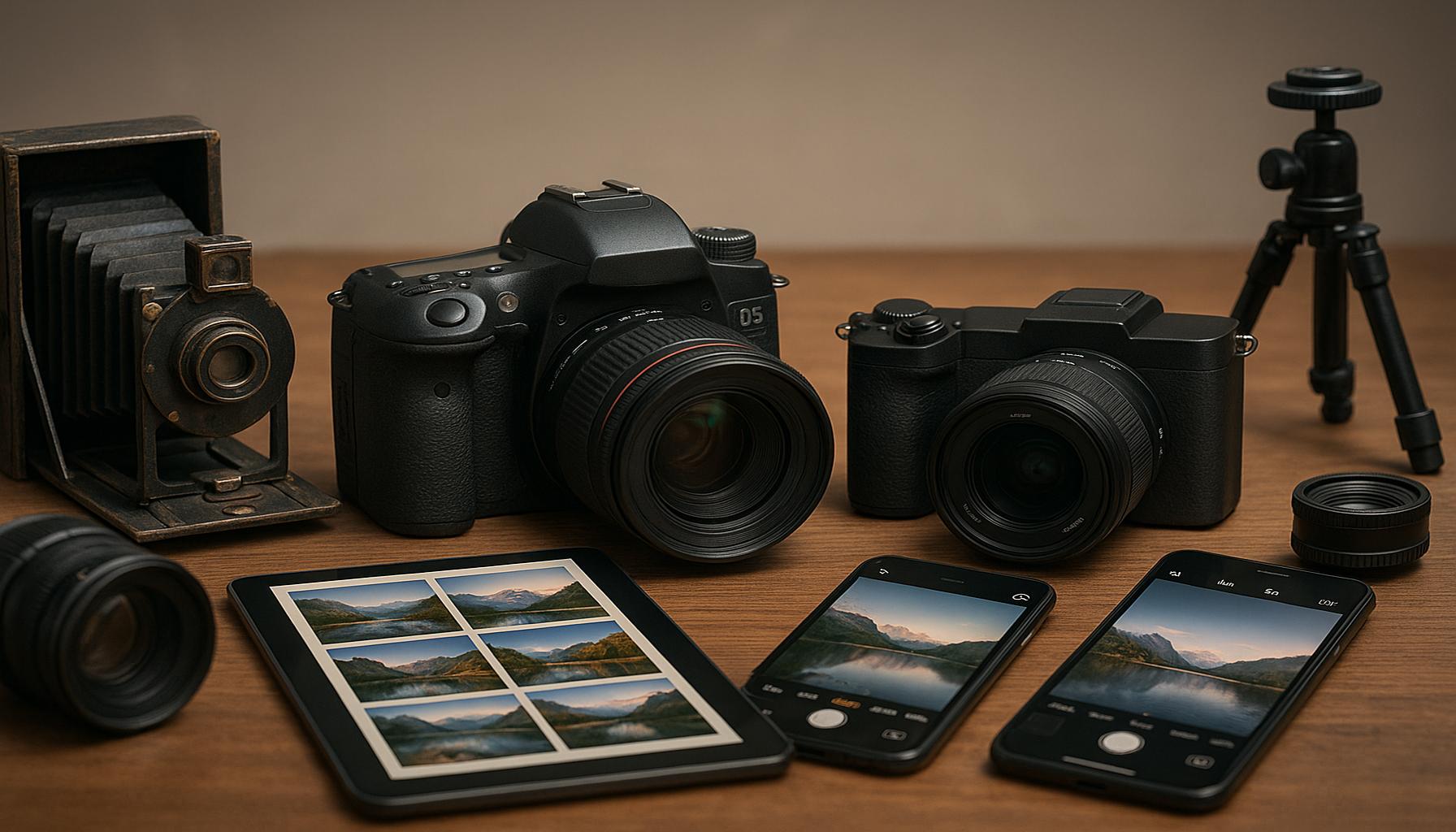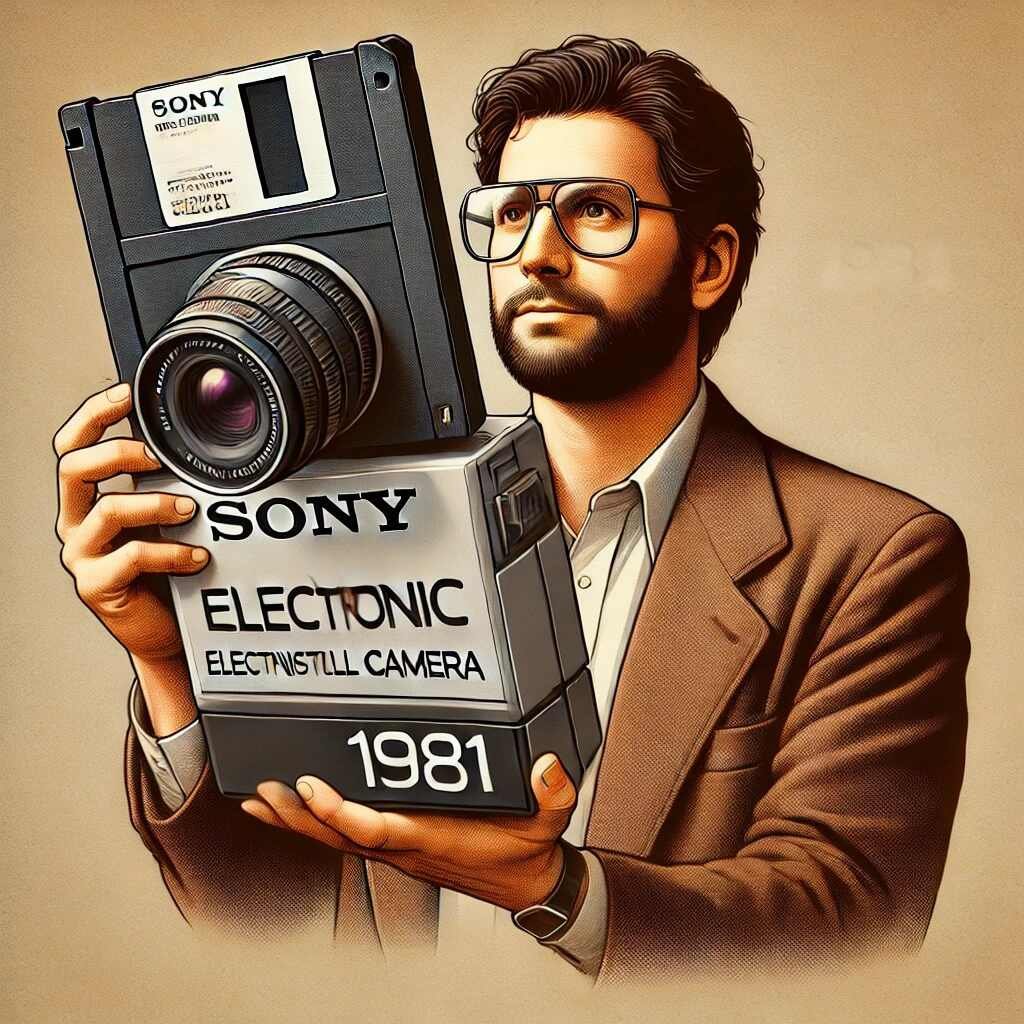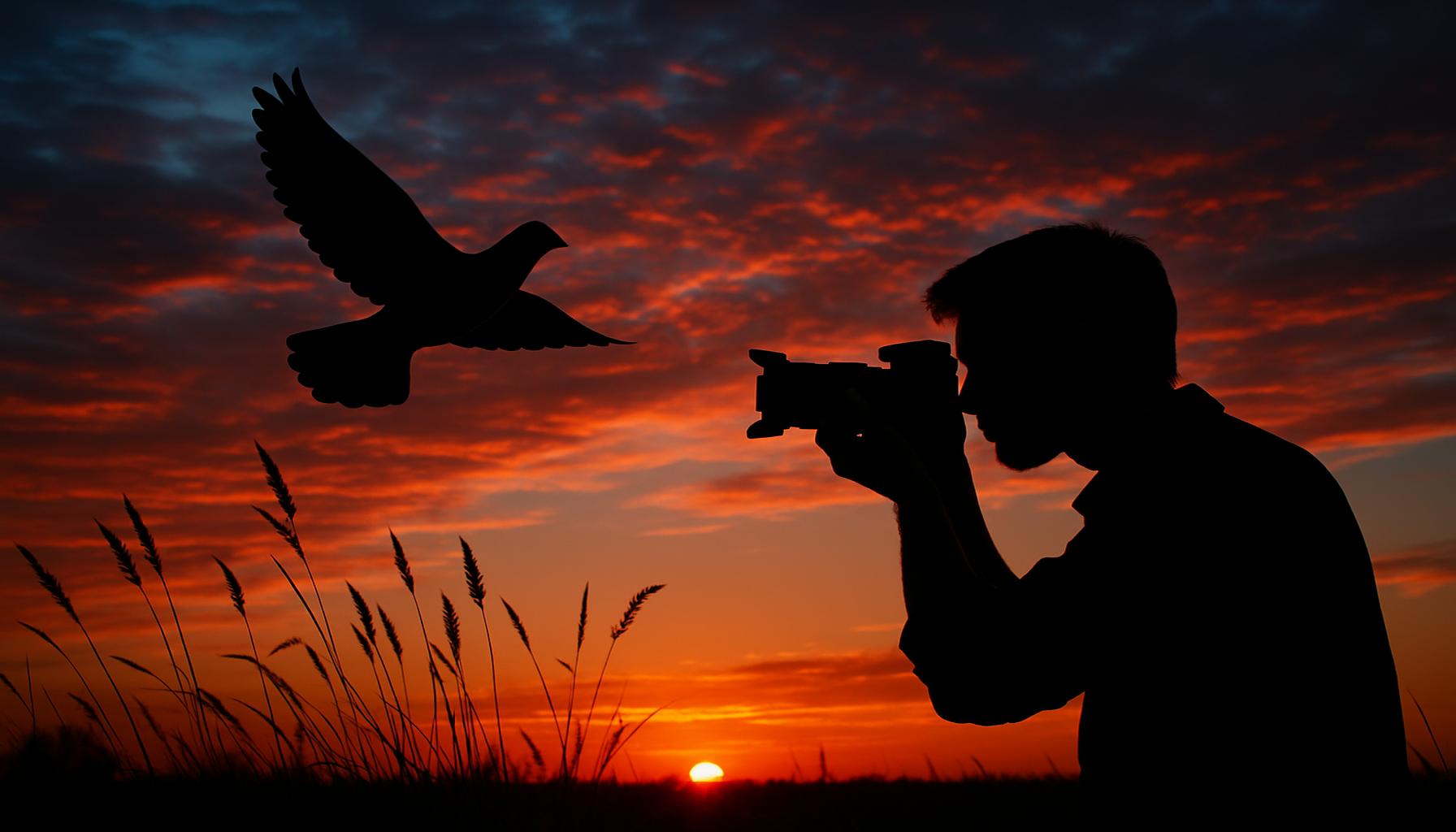The Evolution of Digital Photography: How Technology Transformed the Art of Capturing Images

The Evolution of Photography in the Digital Age
The realm of photography has undergone a profound transformation over the past few decades. What began as an art form requiring intricate processes and bulky equipment has evolved into an accessible medium that captures the essence of moments at the click of a button. Let’s explore the key milestones that have reshaped photography into what it is today.
- The Advent of Digital Cameras: The introduction of digital cameras in the late 1990s marked a significant departure from film-based photography. With the transition to digital, photographers gained the ability to view and edit their images instantly, sparking a dramatic shift in how photos were taken and processed. Pentax and Canon were among the first to release consumer digital cameras, which offered user-friendly interfaces and superior image quality. This technology paved the way for both amateur and professional photographers to experiment and refine their skills without the cost of developing film.
- Image Editing Revolution: Software like Adobe Photoshop allowed photographers to manipulate images in ways previously unimaginable. Initially launched in 1988, Photoshop became the industry standard for photo editing, granting users the power to adjust colors, remove imperfections, and even compose images from multiple shots. Features such as layers and filters transformed the editing process, enabling photographers to create artworks that go beyond traditional photography. The accessibility of such tools led to a new wave of creative expression, as artists began to blur the lines between photography and digital art.
- Smartphone Integration: The rise of smartphones equipped with advanced cameras democratized photography, making it an everyday experience. With the launch of the iPhone in 2007, mobile photography exploded in popularity, as high-quality lenses and advanced software became standard features. Today, devices from various brands such as Google Pixel and Samsung Galaxy boast exceptional camera capabilities, allowing users to capture professional-quality photos effortlessly. Social media platforms like Instagram and Snapchat further fueled this trend, turning social interactions into visual stories.
Technological advancements have not only changed how we capture images but also how we share and store them. The internet has facilitated an explosion in visual content, with social media platforms allowing for quick and widespread sharing. For instance, platforms like TikTok and Pinterest have opened new doors for both casual users and seasoned photographers to showcase their work to a global audience. Today, anyone with a smartphone can engage in photography, leading to a new generation of creators who redefine narratives through their unique lenses.
This transformative journey brings forth questions about artistic integrity, originality, and the evolution of personal storytelling. As we dive deeper, we will reveal how each technological leap has contributed to reshaping the art of capturing images, inviting you to discover the nuances of this fascinating evolution. With the accessibility of digital tools, anyone can craft a visual narrative, yet the challenge lies in maintaining authenticity in a world overflowing with content. How we choose to navigate this landscape ultimately shapes our understanding of photography as both an art form and a powerful medium for connection.
DISCOVER MORE: Click here to uncover the benefits of art therapy
Key Milestones in Digital Photography
The evolution of digital photography has been marked by several key milestones that have not only enhanced the technological capabilities of capturing images but have also influenced the very nature of photography as an art form. As we sift through these transformative moments, we can observe how each advancement catalyzed a change in perspective, enabling both professional photographers and amateurs to explore new horizons.

- Transition from Analog to Digital: One of the most significant shifts occurred with the introduction of the digital sensor, which replaced traditional film in cameras. This transition allowed for more versatility in the shooting process. With sensors like the CCD (Charge-Coupled Device) and later the CMOS (Complementary Metal-Oxide-Semiconductor), image capturing became faster and more efficient. Photographers could shoot in various lighting conditions and instantly adjust settings without worrying about the limitations of film.
- The Rise of DSLRs: The Digital Single-Lens Reflex (DSLR) camera truly revolutionized the market. With the launch of models like the Canon EOS Digital Rebel in 2003, DSLR cameras became more affordable, putting professional-grade equipment in the hands of hobbyists and aspiring photographers. The ability to interchange lenses and the integration of advanced autofocus systems provided unprecedented control and creativity.
- Advancements in Image Quality: As technology progressed, so did the quality of digital images. The megapixel race led to the development of cameras capable of capturing images at alarming resolutions. Today, some cameras boast 100 megapixels or more, ensuring that every detail is captured. Such advancements have not only elevated the quality of prints but have also paved the way for larger displays and applications in industries like advertising and fine art.
These technological innovations not only democratized photography but also changed the parameters by which images are assessed. In the past, factors such as film grain and exposure often dictated the quality and aesthetic of photographs. Today, photographers can take advantage of noise reduction algorithms, high dynamic range (HDR) imaging, and advanced color correction—tools that can transform an ordinary image into a compelling visual statement.
Moreover, the transition to digital has influenced not only how photographs are created but also how they are stored and archived. Digital storage solutions such as cloud services have made it easier than ever to archive vast libraries of images with minimal physical space. This has empowered photographers to explore conceptually heavier projects without the anxiety of losing their work to damage from physical media.
As we immerse ourselves further into the world of digital photography, it becomes clear that each step in technology has played a crucial role in reshaping our understanding of the medium. It’s essential to recognize that the fusion of art and technology continues to evolve, influencing how stories are told and how moments are forever captured. This opens a Pandora’s box of opportunities for creative expression while also generating discussions about the essence of photography as an art form in an era defined by rapid technological change.
One pivotal aspect of the evolution of digital photography is the significant transformation in image quality and accessibility. Early digital cameras produced images that were often inferior to their film counterparts, marked by low resolutions and limited color depths. However, as technology advanced, sensor capabilities improved drastically. Today’s digital cameras boast high-resolution sensors with millions of pixels, enabling photographers to capture intricate details and vibrant colors. This leap in image quality has not only elevated professional photography but has also empowered amateur enthusiasts to explore their creativity more fully.The rise of smartphones equipped with advanced camera technology represents another critical shift in the realm of photography. Smartphones have effectively democratized photography, allowing virtually anyone with a device to capture and share high-quality images instantly. Features such as image stabilization, multiple lenses, and sophisticated editing tools built directly into photo-sharing apps enable users to create stunning images on the go. As a result, platforms like Instagram and Flickr have become hotbeds for visual storytelling, fostering a new generation of photographers who leverage mobile technology to share their visions with a global audience.Furthermore, technological advancements have transformed how images are stored and distributed. Cloud storage solutions now allow photographers to save and access their work securely from anywhere in the world. This flexibility has made it easier than ever to back up large quantities of images and collaborate on projects with other creatives. Additionally, online galleries and social media platforms have opened up avenues for artists to showcase their portfolios and connect with potential clients, ultimately reshaping the traditional career landscape for photographers.The integration of artificial intelligence (AI) into photography is yet another game-changer, with tools capable of automatic image enhancement, noise reduction, and even content-aware filling, which simplifies editing processes significantly. AI-driven features on cameras and editing software allow photographers to focus more on creativity rather than technical challenges. As technology continues to advance, it raises intriguing questions about the future of photography and the ongoing relationship between art and technology.In conclusion, the landscape of digital photography has been dramatically altered by improvements in technology, driving better image quality, redefining accessibility, and offering innovative tools that expand creative possibilities. The continual evolution of this medium encourages exploration and experimentation, ultimately enriching the art of capturing images in ways that previous generations could only dream of.
DISCOVER MORE: Click here to unlock your creativity
Impact of Software and Editing Tools
The transformation of digital photography extends beyond hardware advancements; software and image editing tools have played an equally pivotal role in shaping the medium. With the emergence of user-friendly applications like Adobe Photoshop in the late 1980s, photographers began to view image manipulation not as a departure from authenticity but as an integral part of the artistic process. The capability to enhance colors, adjust lighting, and even alter compositions introduced new creative possibilities.
More recently, the rise of mobile photography applications has further revolutionized this realm. Powerful editing tools are now accessible at the fingertips of anyone with a smartphone. Apps like Snapseed and VSCO allow users to apply filters, adjust exposure, and make intricate edits with just a few taps. User-generated content has surged, empowering everyday individuals to share their unique perspectives through platforms like Instagram and Pinterest. This shift has undeniably democratized the art of photography, blurring the lines between amateurs and seasoned professionals.
The Influence of Artificial Intelligence
Another notable development is the infusion of artificial intelligence (AI) into photography. Modern cameras and smartphones increasingly incorporate AI algorithms that optimize everything from composition to focus. Features like automatic scene detection and image stabilization significantly reduce the technical barrier, allowing users to capture stunning images effortlessly. Moreover, AI-powered editing tools are emerging, automatically enhancing photographs, retouching imperfections, and even suggesting creative alterations based on user preferences.
This sophistication in AI technology presents exciting challenges and debates within the photography community. It raises questions about authorship and the role of human creativity in an art form often defined by an artist’s unique style. While the use of AI can streamline workflows, some argue that excessive reliance on technology may dilute the artist’s personal touch. The conversation around these advancements highlights the ongoing evolution of the medium, as traditionalists and innovators alike grapple with the implications of AI’s role in creative expression.
Digital Sharing and Social Media Revolution
The advent of digital photography also coincided with the rise of social media platforms, allowing images to be shared and experienced globally in real time. Platforms like Flickr, Instagram, and Facebook have become vital for photographers to showcase their work, garner feedback, and build communities. Hashtags and geotagging have enabled users to increase the reach of their images, allowing for global interactions centered on photographic themes.
As online portfolios become increasingly common, the notion of a “personal brand” has emerged prominently within the photography scene. Photographers now focus on curating their social media presence, utilizing visual storytelling to attract followers and potential clients. Notably, the rise of influencers has further integrated photography into marketing strategies across multiple industries. Brands often seek out popular photographers and content creators to leverage their existing audiences, creating lucrative partnerships that were unimaginable prior to the digital age.
What’s evident in this expansive narrative of digital photography is its profound shift from merely documenting reality to becoming a platform for creative innovation and expression. As technology continues to progress, the capabilities of digital photography remain limitless, opening up continuous avenues for exploration within the art form. These transformations invite photographers to rethink their craft and engage with emerging trends, ensuring that the art of capturing images will persist as a dynamic, evolving discipline.
DIVE DEEPER: Click here to discover sustainable knitting techniques
Conclusion
In tracing the evolution of digital photography, we glean insights into a medium that has metamorphosed dramatically due to technological advancements. From the initial transition from film to digital formats, which opened doors to instant capture and editing, to the remarkable software innovations that have empowered photographers of all skill levels, it is clear that technology has profoundly reshaped the art of capturing images. The emergence of user-generated content through various social media platforms like Instagram and TikTok has further democratized photography, enabling a broader audience to engage with and appreciate visual storytelling.
Moreover, the integration of artificial intelligence into photography has marked a new frontier, prompting artists to reconsider the boundaries of creativity and technology. By automating complex editing processes, AI not only streamlines the workflow but also challenges traditional notions of authorship and artistic integrity. This ongoing conversation highlights the balance between embracing technological advancements and preserving the photographer’s unique artistic vision.
As we move forward, the interplay between digital photography and emerging technologies is sure to unleash even more creativity and innovation. Photographers today are not just image makers; they are also storytellers, influencers, and digital entrepreneurs navigating an evolving landscape. Embracing these changes, while remaining grounded in artistic expression, is vital for those looking to thrive in this dynamic field. Ultimately, the evolution of digital photography serves as a testament to the timeless human desire to capture and share experiences, ensuring that this art form will continue to inspire generations to come.



